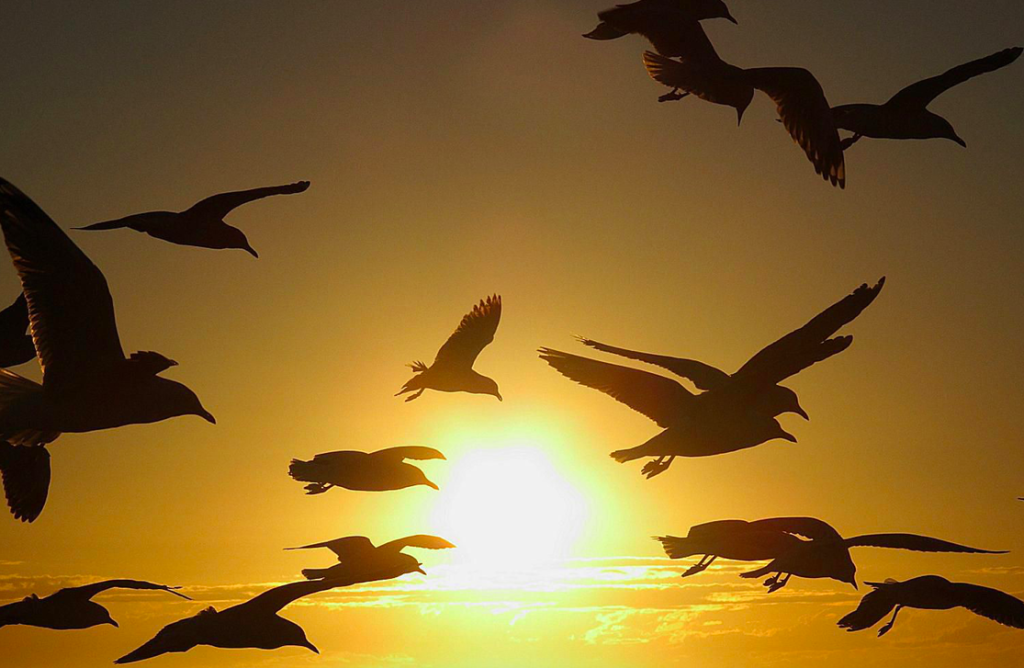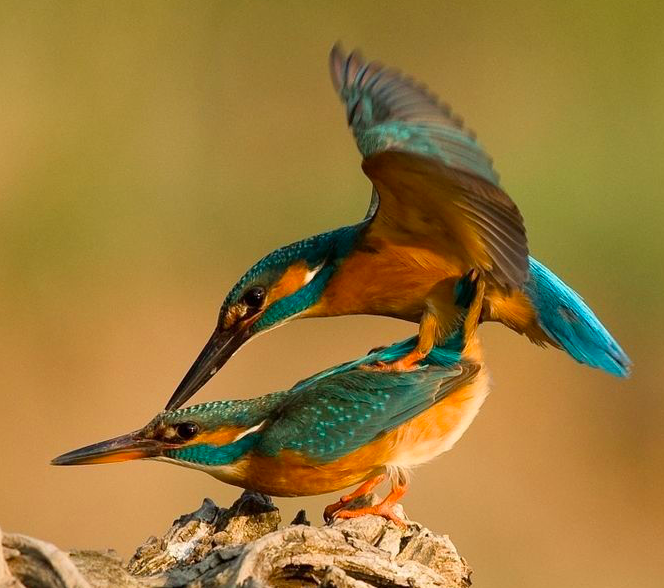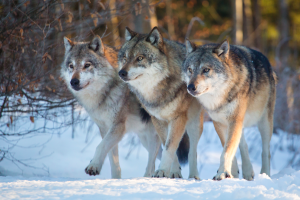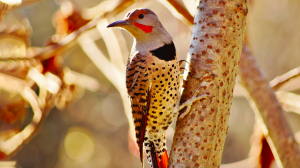Understanding Bird Behavior: Insights into the Fascinating World of Birds

Birds are one of the most intriguing animals on Earth, with over 10,000 species inhabiting every corner of the planet. From the majestic eagle soaring in the sky to the tiny hummingbird flitting about, each bird species has unique characteristics that make them interesting and important to study. Understanding bird behavior can provide valuable insights into the complex ecological relationships that exist between birds and their habitat. This article will examine the diverse aspects of bird behavior and why they matter.
Bird Behavior: Communication
Birds are a diverse group of creatures that exhibit various communication methods. Communication is essential for birds to coordinate their activities, establish and maintain territories, find mates, and warn each other of potential dangers. This article will explore three primary forms of bird Behavior communication: vocal, visual, and chemical.
Vocal Communication
Vocal communication is the most common form of bird communication and involves the use of sound to convey information. Birds produce various sounds, including songs, calls, and alarms. Each species has a unique vocal repertoire that is used for different purposes.
Males typically use bird songs during the breeding season to attract mates and establish territories. Songs are highly structured and complex, often consisting of several notes and phrases. Some bird species are known for their elaborate and beautiful songs, such as the nightingale and the canary.
Bird calls, on the other hand, are used for various purposes, including communication between members of a flock, alarm calls to warn of potential predators, and contact calls to keep in touch with other group members. Calls are usually simpler than songs and consist of a single note or phrase.
Visual Communication
Visual communication is another essential form of bird communication. Birds use a variety of visual signals, including body posture, coloration, and displays. Body posture can convey a bird’s intentions, such as aggression or submission. For example, a bird may puff up its feathers and hold its wings out to the side to appear larger and more threatening to a potential rival.
Coloration is another crucial visual signal used by birds. Brightly colored feathers indicate a bird’s sex, age, and reproductive status. For example, male peacocks have elaborate and colorful tails that are used to attract mates during the breeding season.
Bird displays are also critical visual signals used by many species. Displays can be elaborate and involve complex movements, such as the courtship displays of birds of paradise. These displays are used to attract mates and establish dominance.
Chemical Communication
Chemical communication is the least studied form of bird communication. However, it is still an essential way for birds to communicate. Birds use chemicals called pheromones to convey information about their reproductive status, identity, and territory. Other birds detect pheromones through their sense of smell.
Male birds often produce pheromones to attract females during the breeding season. For example, male zebra finches produce a chemical called androstenedione to attract females. Female birds can also produce pheromones to signal their reproductive status to males.
In conclusion, birds use various communication methods, including vocal, visual, and chemical communication, to convey information to each other. Each species has a unique communication system that is shaped by its environment and social structure. Understanding bird communication is essential for understanding bird behavior and ecology.
Bird Behavior: Migration
Bird Behavior of migration is the regular movement of birds from one location to another, usually to take advantage of better feeding and breeding opportunities. This natural phenomenon is observed all around the world, and some bird species migrate thousands of miles each year.

What is Bird Migration
Bird migration is a complex behavior that involves the movement of large numbers of birds across vast distances. Migration typically occurs in response to seasonal changes in food availability and breeding conditions. Birds migrate to regions where they can find adequate food and nesting sites and where the climate is favorable for breeding and raising their young.
Reasons for Bird Migration
There are several reasons why birds migrate. One of the primary reasons is to take benefit of better food sources. In the winter, food can be scarce in certain regions, so birds will migrate to areas where food is more abundant. Another reason for migration is to escape harsh weather conditions. For example, birds that live in colder climates will migrate south to avoid freezing temperatures and deep snow.
Breeding is another crucial reason why birds migrate. Some birds travel to breeding grounds in the spring and summer to take advantage of more favorable conditions for raising their young. These breeding grounds often have more abundant food sources and fewer predators than other areas.
Types of Bird Migration
Bird migration can be divided into two main types: complete and partial. Complete migration occurs when all members of a bird population leave their breeding range and travel to a different location for the winter. Partial migration occurs when only some population members migrate while others remain in their breeding range year-round.
Bird migration can also be classified based on the distance traveled. Short-distance migration involves traveling a few hundred miles or less, while long-distance migration involves traveling thousands of miles. Some bird species, such as the Arctic Tern, have the longest migration route of any bird, traveling up to 44,000 miles yearly.
How Birds Navigate During Migration
Birds use a variety of navigational signals to find their way during migration. One of the most essential cues is the Earth’s magnetic field. Many bird species have magnetite particles in their beaks or eyes, allowing them to sense magnetic fields. It helps birds navigate in the correct direction during migration.
Birds also use visual cues, such as the sun’s and stars’ position, to guide them during migration. They can also use landmarks like mountains and rivers to guide their migration route.
In conclusion, bird migration is a fascinating natural phenomenon that occurs all around the world. Birds migrate to find better food and breeding opportunities and use a variety of navigational cues to find their way. Understanding bird migration is essential for conservation efforts and understanding these fantastic creatures’ complex behavior.
Bird Feeding Behavior
Birds are fascinating creatures that display a wide range of feeding behaviors. From catching insects mid-flight to cracking open nuts with their beaks, each species has developed unique adaptations to survive in its particular feeding environment.

Bird Behavior Types of Feeding
Birds can be categorized based on their feeding behavior. Some birds are granivores, which means they primarily eat seeds and grains. Others are insectivores, feeding mainly on insects and other invertebrates. Nectarivores feed on nectar from flowers, while frugivores eat mainly fruits.
Some Bird Behavior are carnivores, such as raptors, which hunt and eat other animals, and piscivores, which feed on fish.
How Birds Adapt to Different Feeding Environments?
Birds have adapted to their specific feeding environment in a variety of ways. For example, some birds have developed specialized beaks to help them gather food. Hummingbirds have long, thin beaks to reach deep into flowers for nectar, while woodpeckers have strong, chisel-like beaks to excavate insects from trees.
Other birds have adapted to their feeding environment through bird behavior. Shorebirds, for example, have long legs that allow them to wade in shallow water and capture small fish and invertebrates.
Bird Feeding Techniques
Birds use a variety of techniques to catch their food. Some birds, like eagles and hawks, use their sharp talons to catch prey in mid-flight. Others, like pelicans and gulls, use their big bills to scoop up fish from the river.
Insects are an ordinary food source for many birds; some have developed specialized techniques to catch them. Swallows, for example, are known for their acrobatic flight patterns, which allow them to catch insects mid-flight.
Birds also use tools to help them gather food. Some species of crows and parrots have been observed using sticks to pull insects from tree bark, while some songbirds use thorns to help them hold their food.
In conclusion, birds have a fascinating range of feeding behaviors tailored to their specific environment and diet. By understanding birds’ different feeding techniques and adaptations, we can significantly appreciate the diversity of life in the natural world.
Bird Behavior: Reproduction
Birds are known for their unique and intricate reproductive behaviors, which include mating and courtship rituals, nesting behaviors, and chick-rearing behaviors. These behaviors vary greatly among bird species, and each species has its unique reproduction approach.

Mating and Courtship Behavior
Birds have a wide range of courtship behaviors used to attract a mate. These behaviors can include singing, dancing, and displaying bright colors. Male birds often perform these courtship behaviors, while females pick their mates based on the show’s quality.
Once a mate is chosen, birds often form a strong bond lasting many years—some birds, like swans and geese, mate for life.
Nesting Behavior
After mating, birds will build a nest to lay their eggs in. The type of nest and the location will vary depending on the species. Some birds, like eagles and hawks, build large nests high up in trees, while others, like ducks and geese, build nests on the ground.
Birds use a variety of materials to build their nests, including twigs, grass, and feathers. The female bird will typically lay a clutch of eggs in the nest, and both parents will take turns incubating the eggs.
Incubation and Brooding Behavior
During incubation, the parents will take turns posing on the eggs to keep them warm and protect them from predators. The length of incubation varies depending on the species of bird.
Once the eggs hatch, the parents will continue to care for their young. It includes brooding, which involves keeping the chicks warm and protected and feeding them until they are old enough to leave the nest.
Chick Rearing Behavior
Birds have a wide range of strategies for raising their chicks. Some birds, like penguins, leave their chicks in a crèche while they hunt for food. Other birds, like eagles, will bring food back to the nest to feed their young.
As the chicks grow older, the parents will introduce them to how to hunt for food and defend themselves from predators. Eventually, the chicks will fledge and leave the nest to start their own lives.
In conclusion, bird reproduction is a fascinating process that involves a wide range of behaviors, from courtship rituals to chick rearing. By understanding the unique approaches that different bird species take to reproduction, we can better appreciate the diversity of life in the wild.
Bird Social Behavior
Birds can exhibit a wide range of social behaviors, including flocking, territorial, and agonistic. Flocking behavior is common in many bird species, as it provides protection from predators and helps to find food and mates.
Territorial behavior is also typical in birds, with many species defending their territory from other birds. Agonistic behavior, or aggressive behavior, can occur between birds competing for resources like food, water, or mates.
Human Interaction with Birds
Humans have had a significant impact on bird populations, both positive and negative. Some species, like the bald eagle, have remarkably recovered from near-extinction thanks to conservation efforts.
Other species, however, have suffered from habitat loss, pollution, and other human-induced factors. Understanding bird behavior can help to develop better conservation strategies and protect these critical species.
Conclusion
Bird behavior is a complex and fascinating subject, and understanding it can provide valuable insights into the ecological connections between birds and their environment. From communication to migration to social behavior, each aspect of bird behavior is unique and essential.
By studying bird behavior, we can better understand birds’ challenges and develop better conservation strategies to protect them. With so many bird species facing threats like habitat loss and climate change, understanding and appreciating these incredible creatures is more important than ever.







